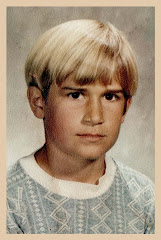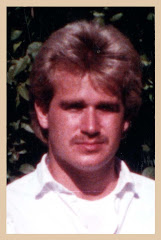
Last weekend a client came into my recording studio to transfer songs from some old ADAT tapes to his computer DAW. (Yes, I still have several ADAT machines in my studio, along with a 16 track analog machine, and many other “old school” gems--seen above.) As the data transferred to his computer we reminisced about the magic days when these old technologies were considered major breakthroughs. It seemed like yesterday, but in fact I realized that I started recording over 30 years ago. What began in my bedroom, and garage in California, moved with me to College. After graduation I moved my equipment into my professor, Jim Anglsey’s, Suites Sounds recording studio in Salt Lake City where I recorded my first live orchestra. After I returned from Hollywood, I moved my equipment into my fourplex. Later, when I got married, I moved it into an apartment, then to a town house, then a custom built house with my studio in the two bottom levels of the basement. After a divorce, I moved it again back into my fourplex, where it now sits often collecting dust. I still produce the odd project every now and then, but with the advent of even simple programs like Garageband everyone considers themselves capable of producing a masterpiece on their own. Obviously, I hope that this wave of cheap technology does not eclipse expertise, and that secrets of the craft are not lost in the ease of acquiring quick results--that loops and samples don’t forever replace composing from scratch, real instruments, and/or virtuosity. Such are the transient concerns of an old fart.
But as I look back over the years, I remember more than surging technology and the acquisition of equipment--I remember the acquisition of knowledge. I also enjoy many fond memories of recording songs with friends and clients during the first decade, and my college years spent composing films scores. After that I primarily spent time helping other artists fulfill their dreams. Among these memories one artist sticks out from the rest of the pack--Jonni Lightfoot. I first met Jonni when he was in high school. He was playing in a glamrock band, hair extensions, make-up, the whole nine yards. Still there was something different about this young lad. He was very serious about his art, and I instantly recognized his emerging genius. Likewise, he quickly latched onto my friendship, advice, and expertise. In his journey through a revolving door of bands, I suggested one day that he go it alone. I reassured him that he possessed more than sufficient talent, vision, and drive to achieve his dreams. In no uncertain terms I told him that he would “make it” in the music business.

Soon after he began tracking a solo album by himself called Copper Street Fair, and came into my studio to record vocals and do the final mix. In the past, in his other bands like Honest Engine and Wish, we laid tracks in my studio, but now he was a budding engineer. I am still very proud of his music and the quality of that album. In fact, I still enjoy it to this day.
After completion of Cooper Street Fair Jonni began to get endorsements from manufacturers, and soon joined up with Air Supply as bassists touring the world concert circuit. While Air Supply originally made their mark in America during the late 70’s and 80’s, they continue to enjoy residual success in South America and the Orient. Jonni also began working as their engineer tracking demos when they were off the road.
Soon after he joined Air Supply I got a call from Jonni who needed some help tracking vocals at Graham Russell’s home studio. Having worked with me in the past Jonni knew that I had invented a variation on MS micing adapted for vocals, and therefore, he requested my expertise. So I packed up a few pieces of gear and some mics and headed up to the studio. When I got their they had a Telefunken U47, and a vintage C12--needless to say, I never needed my mics. Anyway, we tracked for several days and Jonni became familiar with the process.

At that time, many said that Jonni had arrived, but luckily he didn’t abandoned his own solo career. He continues to produce albums to this day, but no longer needs my help, a fact that makes me proud--not resentful. (visit: www.jonnilightfoot.net) Indeed, when one begins to view humanity as the ultimate medium, even the smallest contributions left on another’s life is viewed with rhapsodic joy. These are the memories I will take with me well into senescence, when my hearing has dimmed with age, and my equipment corrodes with rust. I will entertain fond memories of untangling knotted cables, stepping over strewn instruments, squeezing behind heavy equipment, pissing off neighbors, and packing every member of a band into a small control room to mix the opus of their dreams.
The sentient archive of mind is like no other, and music’s place in it holds more than a vestigial remnant. Nothing triggers my memory more than music. For composers and musicians musical memory takes on an additional dimension. For example, stored in the digits of my hand are countless sequences of notes which spill out of the subconscious. So ingrained are they, that it takes no conscious effort. Likewise, as a composer gives birth to each note it generates an intimacy akin to offspring. It laces a cognitive matrix of art interwoven with feelings, memories, intellect, and expression--a cerebral journal of sorts that can be replayed in perpetuity.
Pandora’s Box
In the back of the mind
There’s a key to a lock
Of a box that plays music
When the latch is unstopped
By lifting the lid
Plays a melody sweet
Then thickens like pitch
To a foreboding beat
In all nothing more
Than a pallet for paint
With lights against darks
Neither demon or saint
For the heart is a canvas
Its surface is flush
And intent forces out
The hand wielding the brush
Then stir up this boiling caldron of notes
That pulses through veins
No genre can choke
Till rhythm and theme
Cling like flesh to the bone
The music now takes on a life of its own





















